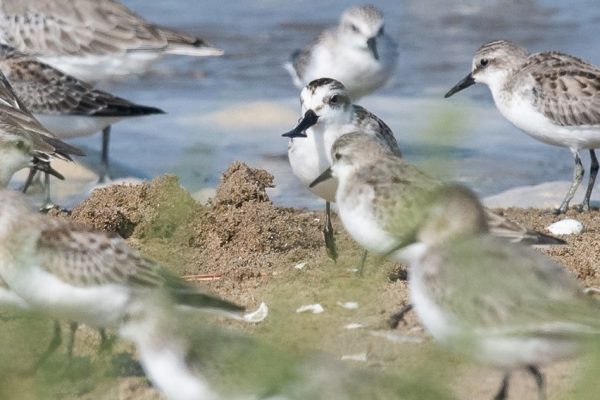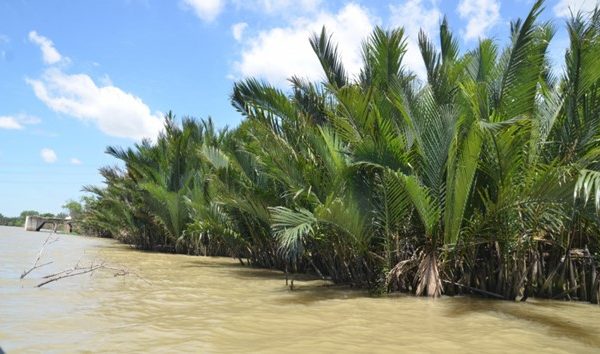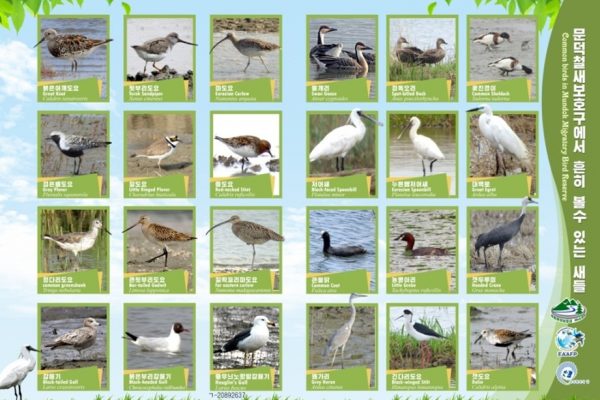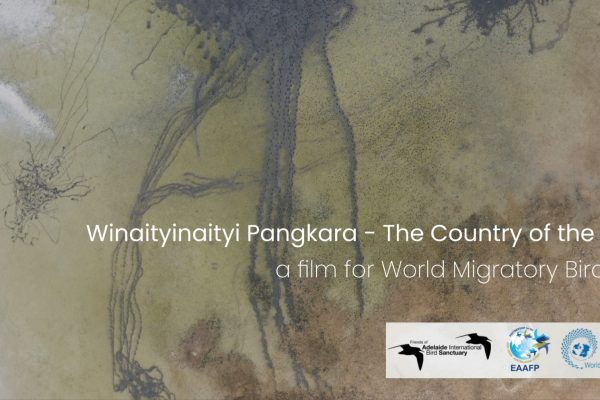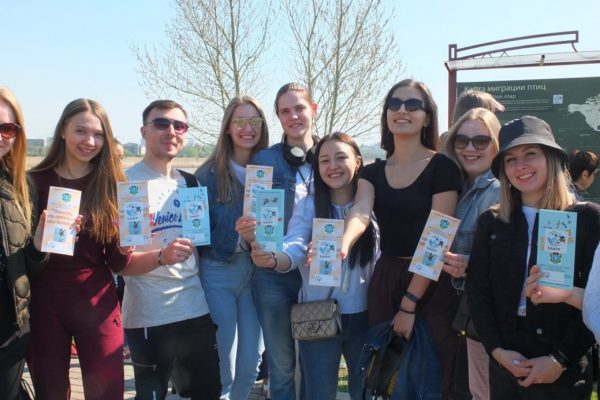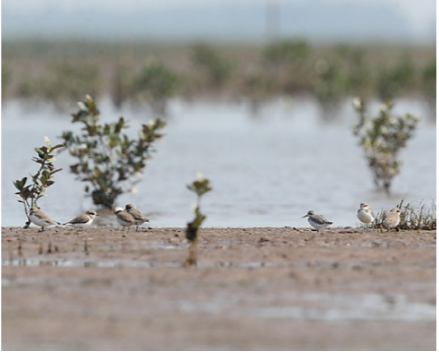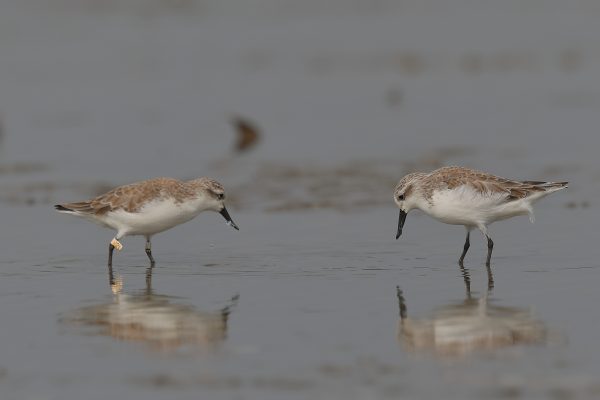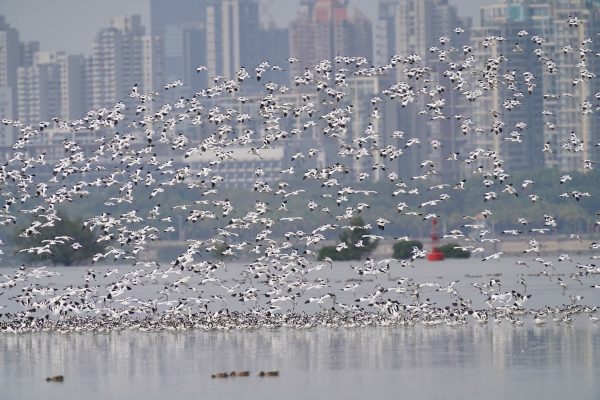-
Getting Getbol (intertidal mudflats) of the Republic of Korea into World Natural Heritage Site inscription
Spoon-billed Sandpiper in Yubudo © Henrik Thorlund The West/Yellow Sea, lies at the heart of the East Asian-Australasian Flyway, a migratory route for 50 million migratory waterbirds traverse on an annual basis which stretches from Russia Far East and Alaska, U.S.A. south to Australia and New Zealand covering 22 countries. This region is surrounded by three countries: The People’s Republic of China, the Democratic People’s Republic of Korea (DPR Korea) and the Republic of Korea (RO Korea). The wetland habitats in this region, especially the intertidal mudflat in this area serve as fuelling, staging stations for two million shorebirds, or 40% of total birds in the Flyway, annually. However, the intertidal mudflat in this region has shrunk by over 65% in past decades, but recent studies in countries outside the Yellow Sea region showing rapid declines of migratory shorebirds strongly related to the loss of the birds’ habitats in the West/Yellow Sea. This illustrates the sites in different countries along the Flyway are highly interconnected due to the migratory waterbirds, and it is crucial to protect, as it is one of the world’s most important migratory bottlenecks for watebirds. The Government of the Republic of Korea has nominated 4 sites of intertidal mudflats, or “Getbol” in Korean, on the country’s southwestern coast of the Yellow/West Sea as the candidate of UNESCO’s World Heritage listing. This group of four sites included in the Phase I nomination are Seocheon Getbol (EAAF101), Gochang Getbol, Shinan Getbol (EAAF146) and Boseong-Suncheon Getbol (EAAF079), covering over 128,000 ha (or 1280 km2) of wetlands. Apart from its spectacular geological processes, these areas are rich in biodiversity, with 2,169 invertebrate species, 857 macrobenthos, 152 marine macroalgae, 47 endemic and 5 endangered marine invertebrate species recorded. The richly diverse benthic community supports a huge number of migratory waterbirds. In addition, the endangered Narrow-ridged Finless Porpoise is often found in the waters within the nominated sites. Hooded Crane in Suncehon Bay © Suncheon City Office Bird surveys have revealed that these sites supported 102 waterbird species and some 34 species with internationally important numbers. The sites were crucial for 15 globally threatened waterbird species including Spoon-billed Sandpiper (CR), Far Eastern Curlew (EN), Nordmann’s Greenshank (EN), Great Knot (EN), Black-faced Spoonbill (EN), Hooded Crane (VU), Saunders’s Gull (VU), Chinese Egret (VU) Swan Goose (VU), Relict Gull (VU), Horned Grebe (VU), White-naped Crane (VU) and Common Pochard (VU). The nomination would also secure the reintroduced population of Oriental Stork (EN). Legflag observations and satellite tracking data furthered confirmed the nominated sites interlinked with other countries in the Flyway. Because of such ecological connectivity of the migratory waterbirds along the Flyway, the World Heritage inscription is not just a matter to the Republic of Korea, as it contributes to assuring that the critical staging area for migratory waterbirds in the Flyway is secured. It is essential to safeguard the integrity of Yellow/West Sea intertidal flat, together with the on-going designation of World Heritage Sites along China coast of the Yellow Sea and potentially with the habitats along DPR Korea at a future date. The future of millions of migratory waterbirds now lay on the hands of the World Heritage Committee to agree on the “Outstanding Universal Value” of this Getbol nomination. The result announcement for this nomination will be made at the upcoming annual meeting of the World Heritage Committee in China in July 2021. Watch the video about the Getbol: Click [here] or the image to enjoy the photo book: Suncheon Bay © Suncheon City Government
Continue reading -
The Korea Specialty Contractors Association – Incheon Metropolitan City Branch Donated 1 million KRW to EAAFP Foundation for Conservation of Migratory Waterbirds.
On 14th May, the EAAFP Foundation announced that Korea Specialty Contractors Association (KOSCA) – Incheon City branch donated 1 million KRW to conserve migratory waterbirds and their habitats in…
Continue reading -
IBRRI 4th Annual Meeting to share future opportunities for strengthening wetland ecosystems in the Indo-Burma Region
The EAAFP Secretariat participated in the Fourth Annual Meeting of Indo-Burma Ramsar Regional Initiative (IBRRI) virtually held on 18 February 2021. The aims were for the IBRRI parties to…
Continue reading -
World Migratory Bird Day 2021 May Event – DPRK
Event title: World Migratory Bird Day 2021 event in DPRK Organizer: Ministry of Land and Environment Protection Participants: About 80 people including school students, teachers or parents, researchers, scientists, site managers for flyway site…
Continue reading -
World Migratory Bird Day 2021 May Event– Philippines (Misamis University)
Event title: Conservation of Wildlife Migratory Bird and Wetland Areas in Misamis Occidental, Philippines through Advocacy and Capacity Development Organizer: Misamis University, Philippines Date: 8th May, 2021 Participants: About 1500 participants including Sangguniang Kabataan, Barangay Officials,…
Continue reading -
World Migratory Bird Day 2021 May Event– Australia (FAIBS)
Event title: ‘Winaityinaityi Pangkara – The Country of the Birds’ – A short film by Adelaide International Bird Sanctuary in South Australia Organizer: Friends of Adelaide…
Continue reading -
World Migratory Bird Day 2021 May Event– Russia (Ecological Watch of Siberia)
Event title: World Migratory Bird Day 2021 event in Russia Organizer: Omsk Regional Youth Public Organization «Ecological Watch of Siberia»,…
Continue reading -
New site in the Gulf of Tonkin coast of northern Vietnam for Spoon-billed Sandpiper
Introduction The coastal wetlands along the shallow Gulf of Tonkin spanning northern Vietnam and southern China (including the island of Hainan) are known to provide critical wintering habitat for several…
Continue reading -
2021 South China Spoon-billed sandpiper (SBS) winter census
Abstract China SBS winter census is conducted annually to assess the distribution and population of this critically endangered species. This year, the census…
Continue reading -
20-Year Population Trends of Wintering Waterbirds in Deep Bay, South China
Along the East Asian-Australasian flyway (EAAF), waterbirds are threatened by a wide range of environmental and anthropogenic factors. Habitat transformation along the coast of China, especially in the Yellow…
Continue reading

